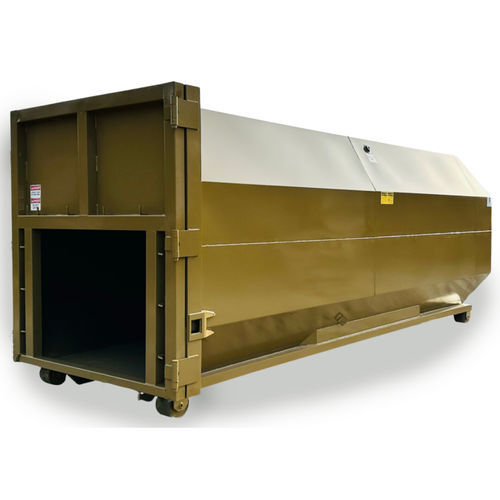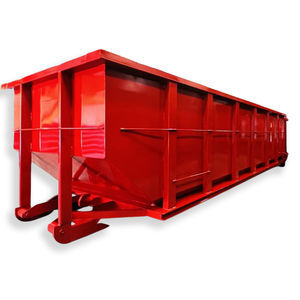
Steel waste container CC seriesrear loadingfor bulky waste

Add to favorites
Compare this product
Characteristics
- Material
- steel
- Type
- rear loading
- Applications
- for bulky waste
- Capacity
Max.: 33,640 l
(8,887 gal)Min.: 22,936 l
(6,059 gal)
Description
FleetGenius Compactor Receiver Containers offer exceptional structural integrity for years of dependable service.
Standard 40yd “Octagon” Receivers promote a “rolling motion” inside during compaction resulting in full containers and maximized payloads.
42yd “Rectangular” Receivers are available with heavy duty specifications for industrial applications.
“Bakers Guard” Protective Coating is sprayed on the understructure for improved durability.
Fast and cost-effective delivery ensured by our 8 distribution facilities, resulting in short lead times.
What Is a Compactor Container?
Compactor Containers, also called compactor receiver boxes, are the container end that attaches to a Stationary Compactor.
Compactor Receiver Container Sizes
FleetGenius manufactures compactor containers in various sizes, ensuring the perfect fit for your waste management requirements.
40 Yard Compactor Receiver Container Specifications
Length- 22 Feet
Height- 105 Inches
Width- 96 Inches
Understructure Cross Members 3″ structural channel on 16″ centers, 2 Gussets per cross member
Main Rails 2″ x 6″ tubing 1/4″ wall, with solid bull nose
Pull Hook 1.5″ integrated and welded into sub-structure cross members
Floor 3/16″ steel plate
Wheels (4) 8″ diameter x 6″ long with grease zerk
Guide Rollers (2) 4″ diameter x 6″ long with grease zerk
Sides and Front 3/16″ steel plate
Sides and Top 10 gauge
Rear Door 3/16″ steel w/ 3-point lever latch and safety chain w/ 6″ formed, channel frame
Catalogs
No catalogs are available for this product.
See all of Fleetgenius‘s catalogsRelated Searches
- Baling press
- Waste container
- Cardboard baling press
- Horizontal baling press
- Trash compactor
- Paper baling press
- Plastic baling press
- Waste baling press
- Metal waste container
- Metal baling press
- Stationary trash compactor
- Textile baling press
- Metal waste bin
- Dumpster
- Mixed waste compactor
- High-capacity baling press
- Steel waste container
- Cardboard compactor
- Top-loading trash compactor
- Paper compactor
*Prices are pre-tax. They exclude delivery charges and customs duties and do not include additional charges for installation or activation options. Prices are indicative only and may vary by country, with changes to the cost of raw materials and exchange rates.



